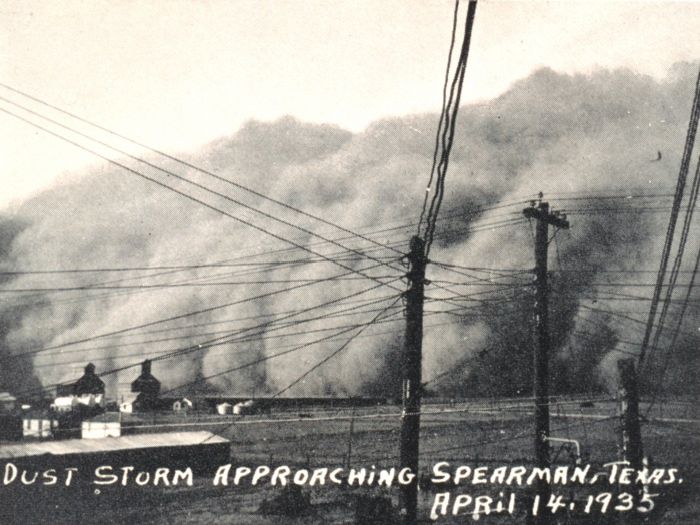|
|
History: Dust Bowl, Dirty Thirties, 1930s, Great Plains, American And Canadian Prairies
|
In 1935, the federal government formed a Drought Relief Service (DRS) to coordinate relief activities. The DRS bought cattle in counties which were designated emergency areas, for $14 to $20 a head. Animals unfit for human consumption – more than 50 percent at the beginning of the program – were killed. The remaining cattle were given to the Federal Surplus Relief Corporation (FSRC) to be used in food distribution to families nationwide. Although it was difficult for farmers to give up their herds, the cattle slaughter program helped many of them avoid bankruptcy. "The government cattle buying program was a blessing to many farmers, as they could not afford to keep their cattle, and the government paid a better price than they could obtain in local markets."
President Roosevelt ordered the Civilian Conservation Corps to plant a huge belt of more than 200 million trees from Canada to Abilene, Texas to break the wind, hold water in the soil, and hold the soil itself in place. The administration also began to educate farmers on soil conservation and antierosion techniques, including crop rotation, strip farming, contour plowing, terracing, and other improved farming practices. In 1937, the federal government began an aggressive campaign to encourage Dust Bowlers to adopt planting and plowing methods that conserved the soil. The government paid the reluctant farmers a dollar an acre to practice one of the new methods. By 1938, the massive conservation effort had reduced the amount of blowing soil by 65%. Nevertheless, the land failed to yield a decent living. In the fall of 1939, after nearly a decade of dirt and dust, the nearly decade-long drought ended, as regular rainfall finally returned to the region.
At the end of the drought, the programs which were implemented during these tough times helped to sustain a positive relationship between America's farmers and the federal government.
A 1935 report by the President's Drought Committee, covering the government's assistance to agriculture during 1934 through mid-1935, discusses conditions, measures of relief, organization, finances, operations, and results of the government's assistance. Numerous exhibits are included in this report.
|
|









